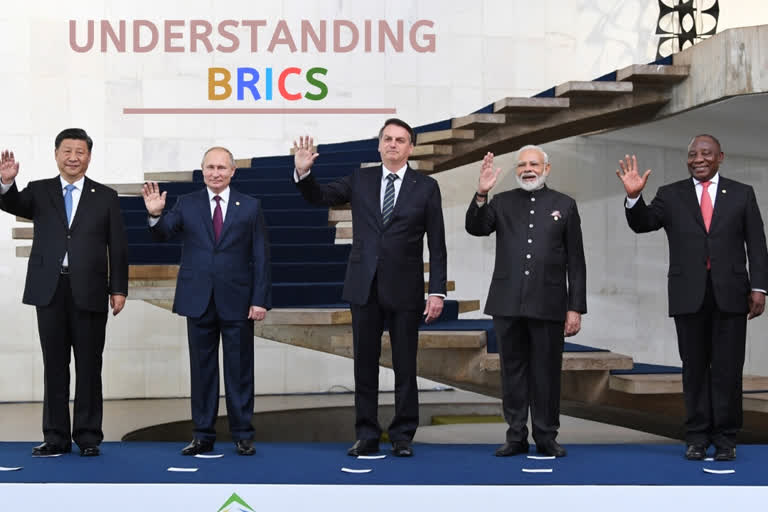New Delhi: The 11th BRICS Summit concluded on November 14 in Brasilia, Brazil. The five-member annual event was attended by the heads of state of Brazil, Russia, India, China and South Africa.
The term BRIC representing Brazil, Russia, India and the People’s Republic of China, was first coined in 2001 by Jim O’Neill, the then Chairman of Goldman Sachs Assets Management Group to denote four fast emerging economies of the world. O’Neill predicted that these economies would, by the year 2050, be four of the top five economies of the world with China and India taking the top two ranks. This prediction was based on the prevailing robust economic growth in these countries.
Encouraged by their steady fiscal growth, the four nations decide to formalise this grouping and the first summit meeting of BRIC was held in June, 2009 in Russia. Later, the Republic of South Africa was added to the group expanding it to BRICS. Many more countries like Indonesia, South Korea, Pakistan etc. have since expressed their desire to join this new group.
BRICs, covering more than 27% of the world's landmass and more than 41% of the global population, commands a nominal GDP of US$ 18.6 trillion (23.2% of the world), GDP (PPP) of US$ 40.55 trillion and huge foreign exchange reserves of US$ 4.46 trillion, thanks mainly to China. These enormous figures certainly make the world take a serious note of BRICS.
With the basic aim to “reform financial institutions and improve the global economic situation,'' BRICS soon began raising concern over the west-influenced and lop-sided modus operandi of IMF and World Bank. In a major role reversal from the traditional stand of borrowing by developing countries, BRIC in 2012 pledged US$ 75 billion to boost the lending power of IMF.
Read: Terrorism results in $1 trillion loss to world economy: PM Modi at BRICS Summit
Amidst the criticism of moving painfully slow, BRICS decided in 2014 to establish its own bank called New Development Bank with seed money from an initial contribution of US$ 10 billion per member state (to be doubled later). This bank provides loan for developmental projects in various countries.
In 2014, BRICS also signed an agreement to establish a Contingency Reserve Arrangement, aimed at ensuring liquidity for member-states when they are confronted by short term balance of payment crises. The capital of $100 billion committed under this arrangement, will act as the guarantor of BRICS financial stability in case of crisis.
The member nations are also working to have understandings/agreements in various other fields like communications and Information technologies, customs and tariff, climate change and pollution control, counter-terrorism, R&D in health, innovation in science & technology, energy, separate fund transfer system to challenge SWIFT in order to circumvent the US sanctions, etc.
However, like any other multilateral organisation, BRICS too has its share of criticisms. While some critics brand it China-centric, others slam it for being a group of divergent and competitive interests. But we must not forget that all regional organisations do experience friction among the members, a natural result of not always having the same or even similar goals. After all, it is the job of good diplomacy to get the best solution out of the existing conditions.
Another question likely to be asked is why should BRICS be important to us and what have we got from the recently concluded BRICS summit?
Firstly, these regional small groupings are easy to handle and easier to have deliberations and arrive at decisions than the larger groups. Secondly, with SAARC almost dead and G20 having been reduced to a mini UN, smaller groupings like BRICS, BIMSTEC and ASEAN become more relevant for our specific purposes. The recent summit in Brasilia has vindicated our stand on the need to have a joint effort to counter terrorism and all the related malpractices like terror funding and money laundering.
Read: BRICS nations to deny safe haven to economic offenders



